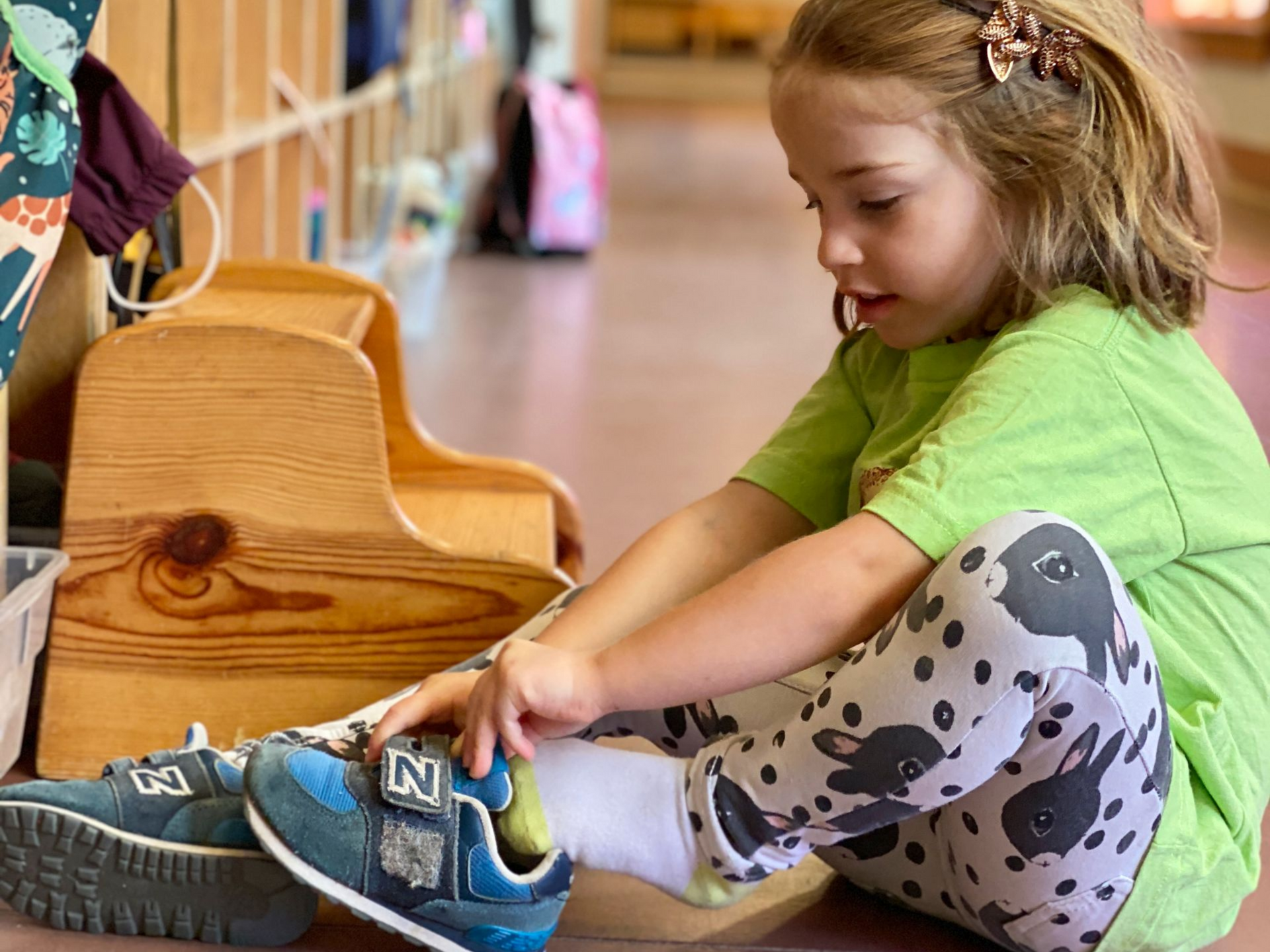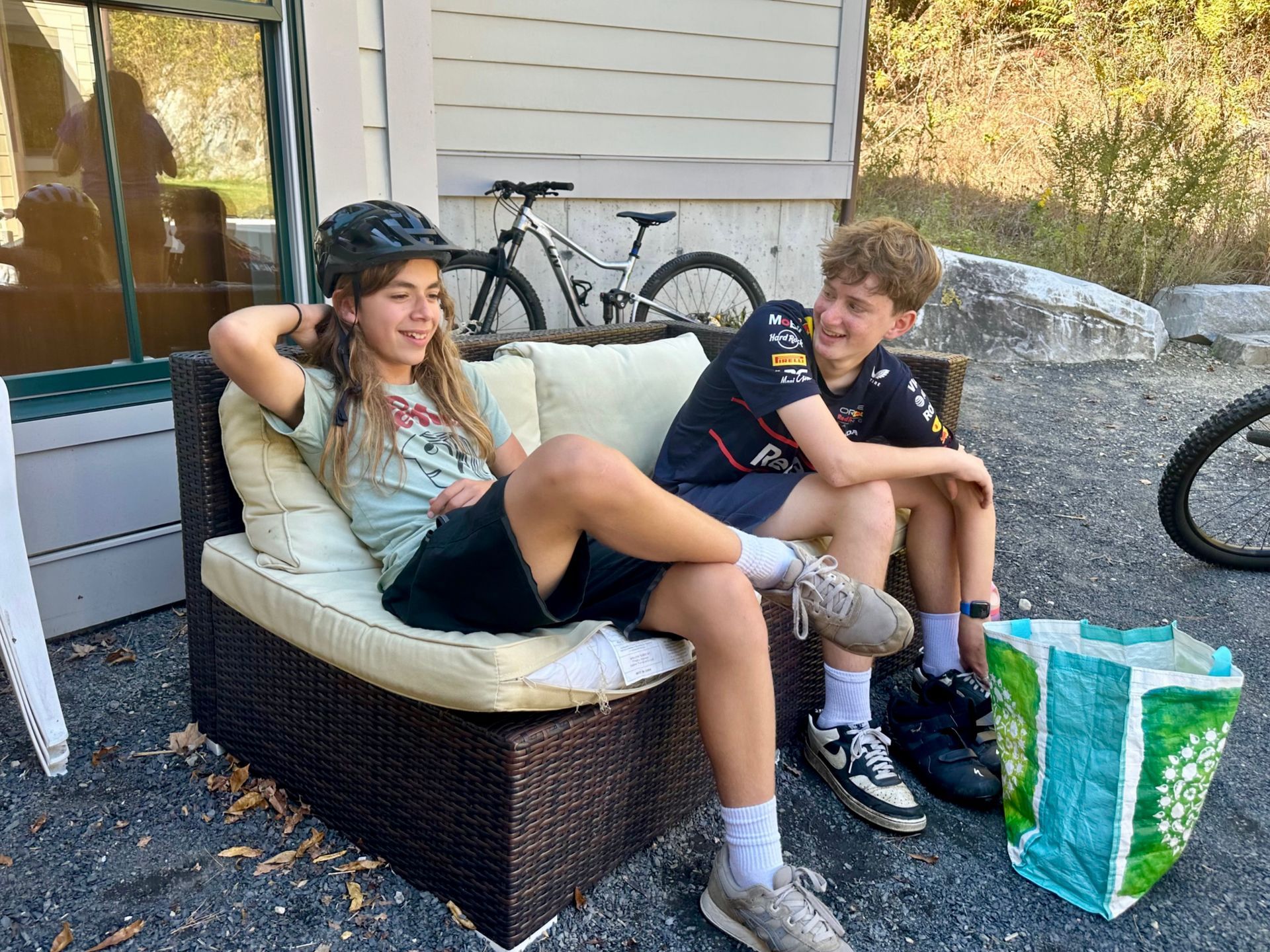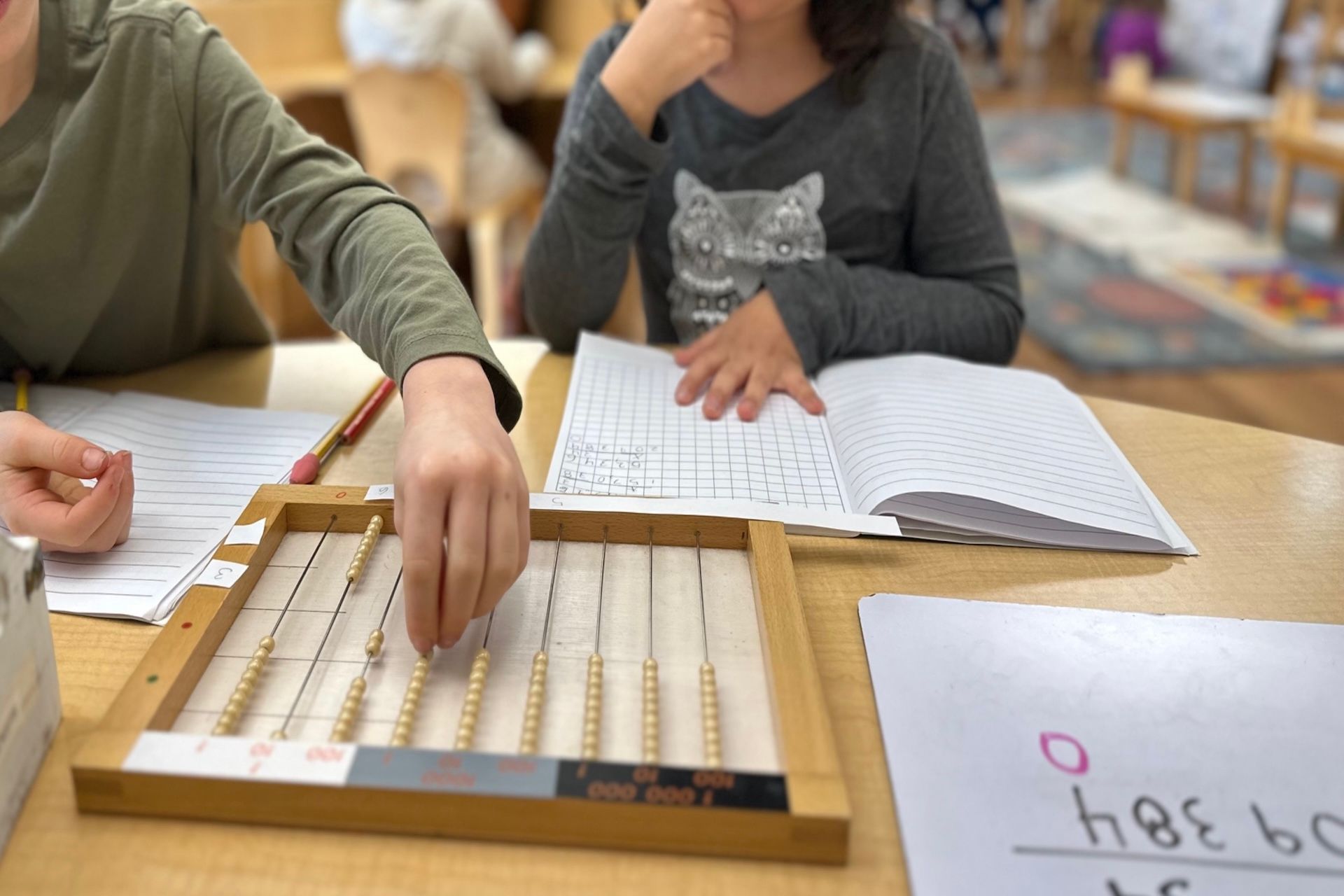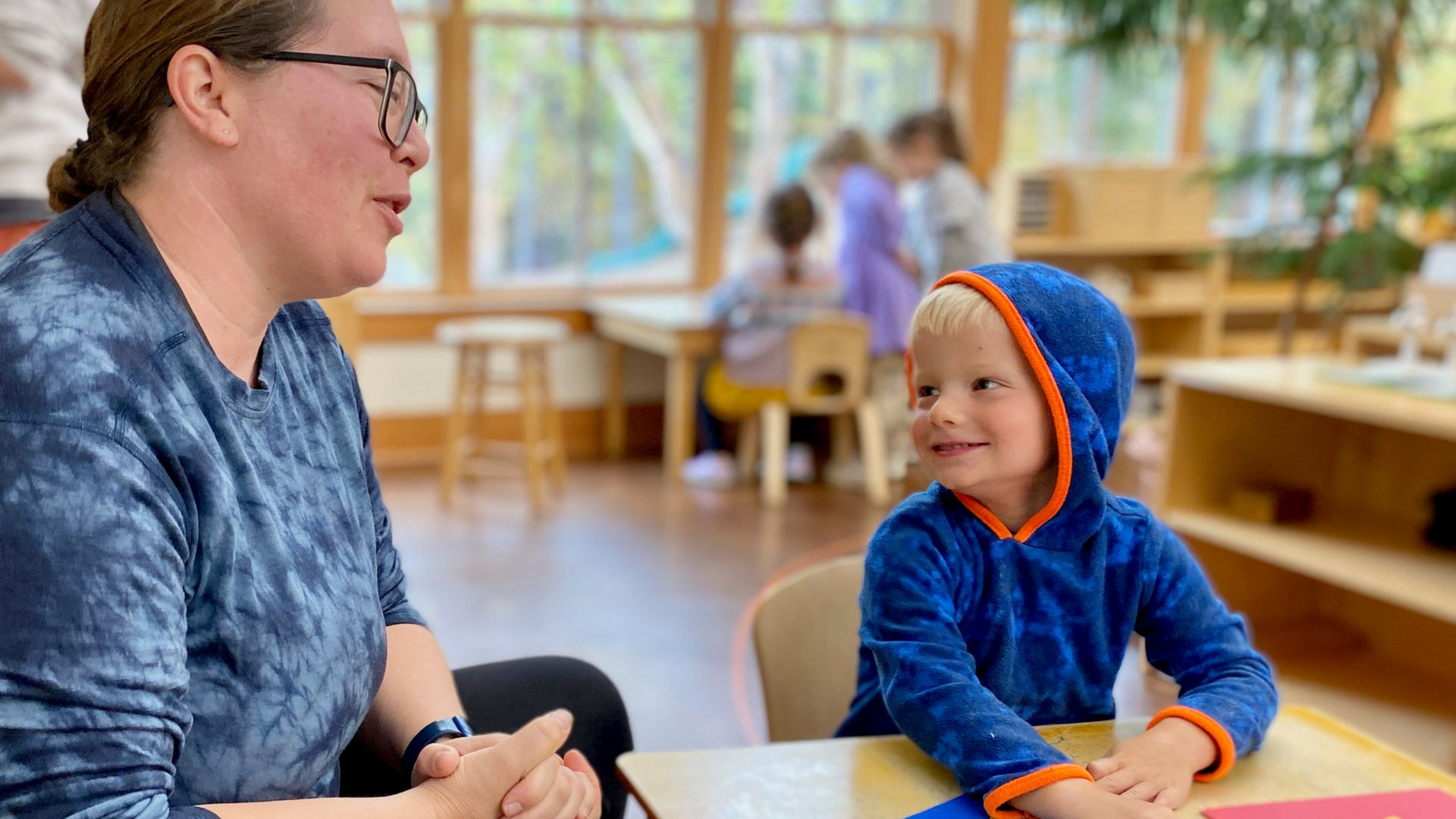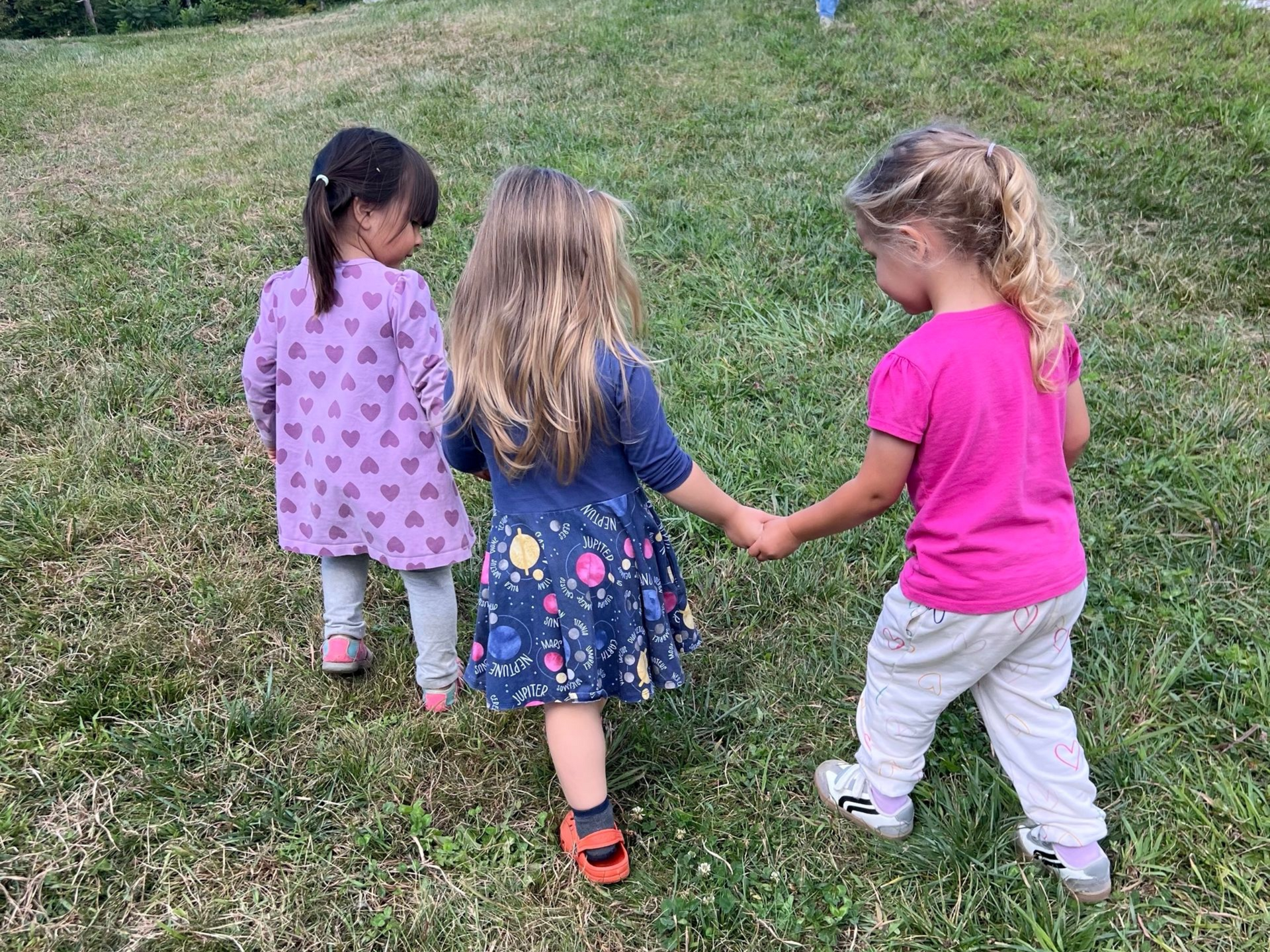The Power of Three

In Montessori, the number three shows up a lot! We have the three-hour work cycle, three-year age spans, the three-period lesson, and the three-stage learning cycle. While there is considerable spiritual significance to the number three throughout human history, in a Montessori context, the importance of these threes is grounded in scientific observation of human development, characteristics and needs during different stages of growth, and how our brains synthesize information.
If you are curious about the three-hour work cycle and three-year age spans, check out some of our past blog posts. This time we are going to focus on the learning process and how the three-period lesson and three-stage learning cycle meet young people’s needs for internalizing and synthesizing new information.
Three-Period Lesson
The three-period lesson model came from Édouard Séguin (1812-1880), a physician and educator known for his work with children with disabilities. Séguin used the three-period lesson to help children make an association between an object and its corresponding term.
The three-period lesson captivates young children and rouses interest. Dr. Maria Montessori began to use three-period lessons to help young children connect language to the perception of an idea, and ultimately create a permanent acquisition in their memory. There are three discrete stages to this approach.
The First Period: Naming
This first stage of the lesson is when we introduce vocabulary and help children make the connection between their experience and the language. In this first stage, we want to isolate both children’s impressions and the matching word.
At the infant and toddler level, we start with real objects or small replicas. With young children, we have about four objects in a basket. We pick up one object and name it. We then allow a child to have a turn feeling the object and having their own sensorial experience of the item. In the process, the child brings together the name and their sensorial experience. We continue this with each object, saying the name multiple times. For example, “This is the _____. You can feel the _____. You can place the ____ here.”
We also use a similar process for introducing vocabulary through language cards which have a picture of one isolated object on the card.
As children get a little older, we start introducing language for more abstract concepts. For example, if we are introducing tactile experiences, we offer children two different tablets that are identical except for one feature: one has rough sandpaper on it and the other has smooth paper. We feel the rough tablet and say: “It is rough.” Then the child feels the rough tablet. We repeat the same process for the smooth tablet.
The Second Period: Recognizing
This is the longest part of the lesson because we want children to have many experiences with the object or quality and its name. We rearrange the objects or cards and then ask children to place them in different locations or to point to a particular one. We might ask, “Which is rough?” Or say, “Place the _____ on my hand. Place the ______ here.”
We approach this second stage in a playful, game-like way although the goal is to cement the concept in children’s memory. If children make a mistake, we do not correct. Instead, we merely reinforce the correct vocabulary: “You handed me the picture of the cheetah.”
The Third Period: Remembering or Recall
We ask children aged three and older to recall the name that corresponds to the object by isolating the object or image and asking for its name: “What is this?" If children aren’t able to remember, we just try the three-period lesson again on another day.
We don’t use this third stage with children younger than age three because they might not yet be ready to produce the sound. Plus, this request for recall isn’t a great idea to use with children when they are in their oppositional stage (around age two)!
The Elementary Years
Elementary-aged children engage with new material in a similar, yet more sophisticated way. The learning process echoes the three-period lesson but isn’t exactly the same.
The first period involves a presentation by the adult, which can include the great stories, impressionistic charts, materials, experiments, and demonstrations. The focus is on introducing specific concepts, activating student interest, and providing a big-picture view before going into specific details. Rather than being vocabulary-based as with younger children, these lessons are intended to introduce elementary students to the wonder of the universe. In this first period, the adult gives only what is absolutely necessary for the lesson, so the students can move into their own exploration.
The second period is the longest part of the learning activity and is an exploratory phase of learning when students freely choose follow-up work. We want to see how far children can go with what they have learned, so the second period offers repetition with variation and encourages extension and elaboration of original concepts. Once they have done extensive work, students have reached the third period.
During the third period, the adults are discreetly and indirectly assessing children’s learning. Through conversation and observation, adults can see if the students can recognize the concept and perhaps apply it to a new or novel situation. Unlike with younger children, there is no expectation for students to perform or produce evidence of their learning. The onus is on the adult to observe and gather data that will help direct future lessons and even re-presentations.
In Adolescence
A similar learning cycle also exists in the Montessori adolescent community as a way to support learning, development, and self-creation for teens.
Similar to what happens in the elementary, this first stage is a lesson or experience offered by an adult. It is an invitation to work and contribute to community needs by addressing a specific, concrete issue. In the first stage, adults can also elicit student input by asking adolescents for options and choices about the work they want to do and how they want to do that work.
During the second stage, students engaged in freely chosen work that is activated by interest or a recognition of a need in the community. The adults are there for guidance as adolescents work with skills and ideas and begin to consolidate them. This stage can include research, experimentation, inquiry, data collection, discussions to enhance collective understanding, physical and practical work to accomplish a task, and consultation with experts. Throughout the second stage, the adults are looking for what draws students into the task, what keeps them working, and what drives contribution to produce, think, and question.
In the third stage, adolescents can offer what they learned by giving back to their community. Unlike in the elementary years when the adults are discretely observing for understanding, now there is an expectation that adolescents can produce a product at the end of their work. This sharing of knowledge and understanding is both a consolidation of concepts and skills, and a way to acknowledge that the work exists within the context of community. Products of the third stage can include a demonstration, publication, or implementation.
While these three stages take on slightly different forms from infancy through adolescence, the goal is the same: to effectively support young people as they integrate their learning. Come visit our school to see the power three!





